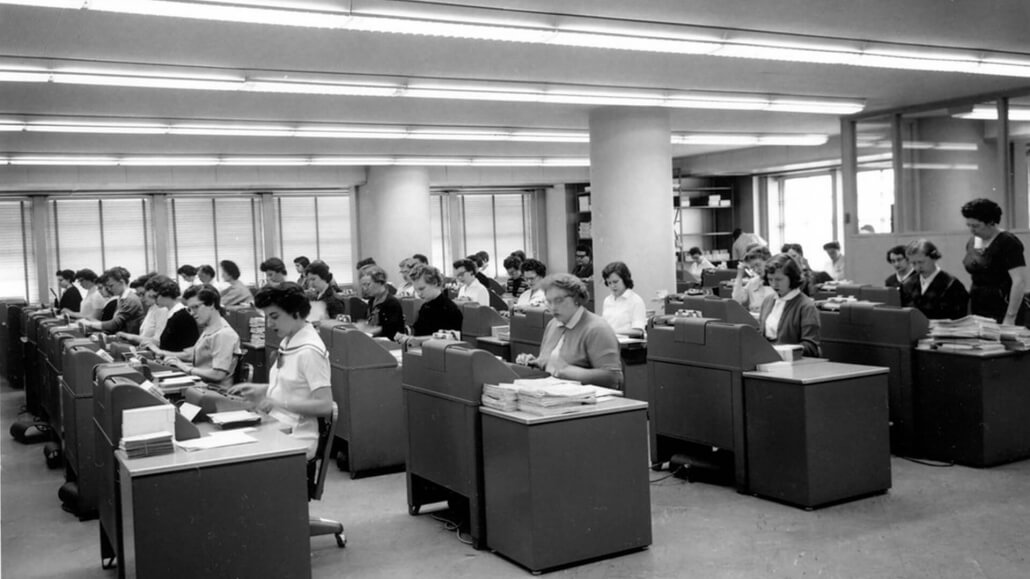The Coworking Value Proposition – Part 2 (Members)
In Part 1 of this Series on the Value Proposition of the Coworking Industry, I provided an overview of how an increase in the distributed workforce is driving change in the traditional office model. While many remote or distributed workers have depended on a home office or coffee shops to fulfill their workplace needs, these are not the ideal setting for a productive worklife. Coworking is the right solution, and the industry is just getting started.

Goldilocks & the Three Bears (St. Nicholas serial, 1873)
Over the course of the next four entries in the series, I’ll go through what the value proposition of coworking looks like for each major stakeholder in the industry: members, commercial real estate, employers, and communities. As the operator of a coworking space, these are the groups that are most important for me to consider when establishing and communicating the value of my business. For each of these groups, I’m going to ask & answer the same five questions with that group’s perspective in mind:
- What are the benefits of coworking?
- Why are these benefits valuable?
- What are their main problems?
- How does coworking solve these problems?
- Why is coworking the best solution to these problems?
As members are the lifeblood of coworking spaces, that is where I’d like to begin. This is likely the group I’ve seen the most written about, but its also the most important and thus is very deserving of the attention.
What are the benefits of coworking for members of coworking spaces?
Distributed workspace: Coworking spaces provide professional work environments away from a corporate office besides a home office, coffee shop, hotel lobby, or library. This includes good desks and supportive chairs, fast and consistent internet access, well designed work areas, private spaces for calls and client meetings, as well as coffee and snacks to keep you going throughout the day. (For more, check out the base level in Maslow’s Hierarchy of Needs for Coworking Members)
Flexible workspace: Coworking spaces offer flexible membership & lease terms that can vary from as short as hourly, daily, and monthly, to multi-year leases (*although with the new IPFS16 standards, leases 12-months and shorter are the most desirable – need to write more on that in another post). The workspaces themselves are flexible as well. Most coworking spaces provide a range of casual café or lobby seating, open desk space, and private office suites.
Affordable workspace: Particularly when compared to the overhead costs of renting and maintaining private commercial office space, coworking space memberships are extremely affordable. For the cost of one membership, the office space, utilities, meeting space, restrooms, kitchen amenities, and more are typically included.
Connected workspace: Coworking spaces have professional communities, other people around to provide human interactions, even if small.
Why are these benefits valuable?
A full time job averages over 2,080 hours per year. That’s a lot of time, so there should be a high bar placed on what those workplaces offer to make that time pleasant and productive. And as more people are able to participate in remote work, the infrastructure to support that workforce needs to be where the workforce is – coworking spaces provide that infrastructure. For more on why I think the benefits of coworking are valuable, see “Maslow’s Hierarchy of Needs for Coworking Members”. What it comes down to is time is valuable, and the more productive those limited hours are, the more valuable they become.
What are the main problems being faced by customers?
Productivity. For those that can work remotely, there is still a need for somewhere to work and do so productively. For those that freelance, are on small teams, or work for themselves, there is still a need for somewhere to work and do so productively.
Work-Life Balance. Long commutes are detrimental to personal health and time, and to the environment. Costs of living are often too high near a corporate office to be able to move closer (think Silicon Valley/New York City) and moving is not always a good option when it takes a family away from their social support network.
How does coworking solve these problems?
In short, by providing flexibility & community, and everything else needed to achieve a high level of productivity.
By providing a professional work environment where it is needed, not where a person is told to be. Good internet access to ensure digital connectivity, nice office space for ergonomics and to support focused work, a community of other professionals to support human connection when desired. Locations distributed throughout communities, from downtown centers to rural towns. Varied workspace for focus, for collaborative space, for privacy, casual work, etc. Easy to access, flexible for when life changes.
Why is coworking the best solution to these problems?
Coworking spaces meet the professional needs of the distributed workforce, but they also help meet our personal needs by decreasing loneliness and increasing autonomy in how, where, and when to work. A recent FlexJobs Survey found that the reasons professionals say they would prefer to work from home rather than a corporate office included a decrease in distractions, a decrease in interruptions from colleagues, less stress from a long commute, and less office politics. While working from home can provide these benefits, there are even more downsides that cannot be ignored: home life distractions, isolation from peers, reduced work-life delineation, no professional meeting space for client meetings, etc. Coffee shops and other public spaces may remove the feelings of isolation to a degree, but only because of the presence of people. They lack the peer networking opportunities. Often they are too casual, can offer little to no privacy, may be noisy and thus distracting, and may not provide the level of stable internet connectivity and hours that are required for a truly productive work life.
Coworking spaces are the goldilocks solution for the distributed workforce. They are not the too-rigid corporate office or too-casual home office or coffee shop. They are just right.



